This is a continuation of testing of the following macro lenses :
- Sony 90mm f/2.8 FE Macro
- Leica 100mm f/2.8 Apo Macro-Elmarit-R
- Zeiss 100mm f/2 Makro-Planar ZF
- Nikon 105mm f/2.8 Micro-Nikkor G VR
The test starts here:
The first series of tests is aimed at determining focus shift and longitudinal chromatic aberration (LoCA) at 1:2 (half size on the sensor), See this page for the test protocol:
The Zeiss 100mm f/2 Makro-Planar has an excellent — and, as we will see, well deserved — reputation. It is reasonably small for such a fast lens. It has a 360-degree focusing helicoid, which is adequate, but not as luxurious as the Leica’s 720-degree one. It has backwards compatibility in spades; my version, the ZF one (not the ZF/2), even has the little clot to engage the pin that the mid-sixties Nikon FTn used to determine what f-stop the lens was set to.
Let’s look at LoCA first. At f/2:
The vertical axis is MTF50, measured in cycles per picture height (cy/ph). The horizontal axis is camera position shift in mm. The points on the left side of the graph are with the camera farther away from the subject than the points on the right. I used a 50 um (0.05 mm) step size. The three raw channels are plotted. Several things are apparent:
- The green channel is the sharpest, followed by the green and red ones in a tie for last.
- The point of best focus is about the same for the green and blue channels,
- The red channel has a different point of best focus; that means the lens suffers from LoCA.
- The spread among the peaks is a bit under 1 mm, which is about the same as the Leica at f/2.8.
At f/2.8:
The lens is getting sharper. The LoCA spread is about the same.
At f/4:
If anything, the LoCA spread is getting better. The lens continues to get sharper.
At f/5.6:
The LoCA is not getting worse, and is reaching the point where the depth of field will cover it up. At this point the Leica lens had about 1.5 mm of LoCA spread, too much for depth of field to make up for.
At f/8:
The LoCA spread has decreased to about half a mm, roughly a third of what we saw with the Leica at this aperture.
At f/11:
You’ll never see this amount of LoCA in a real photograph.
Now we’ll regraph the same data in order to show focus shift.
In the red channel:
There is very little focus shift, and it has the nice property that it moves first closer, then reverses course and moves farther away as you stop down.
In the green channel:
Pretty similar.
In the blue channel:
That’s worse, but still not bad. In all cases, f/4 and f/5.6 are the best apertures. In the green channel, f/2.8 is impressive.
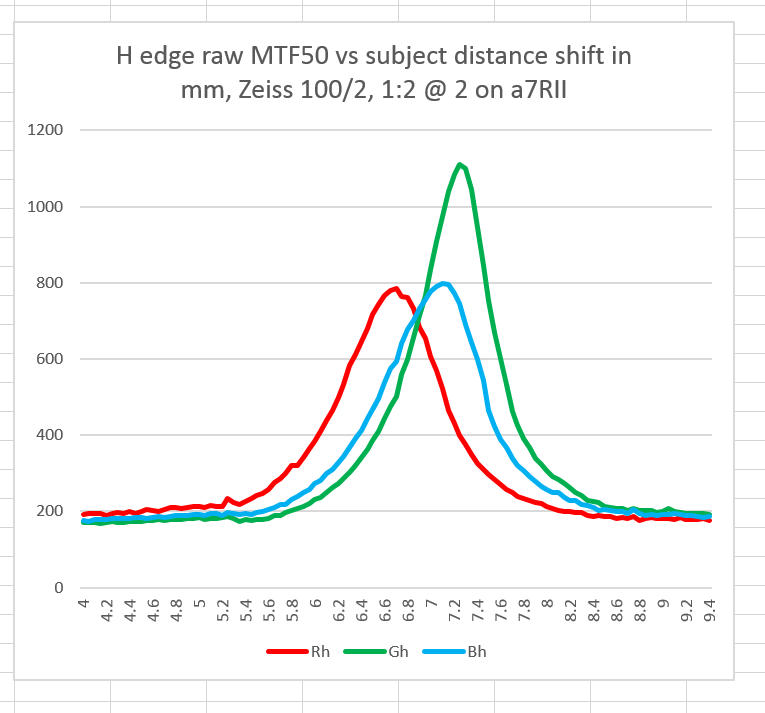

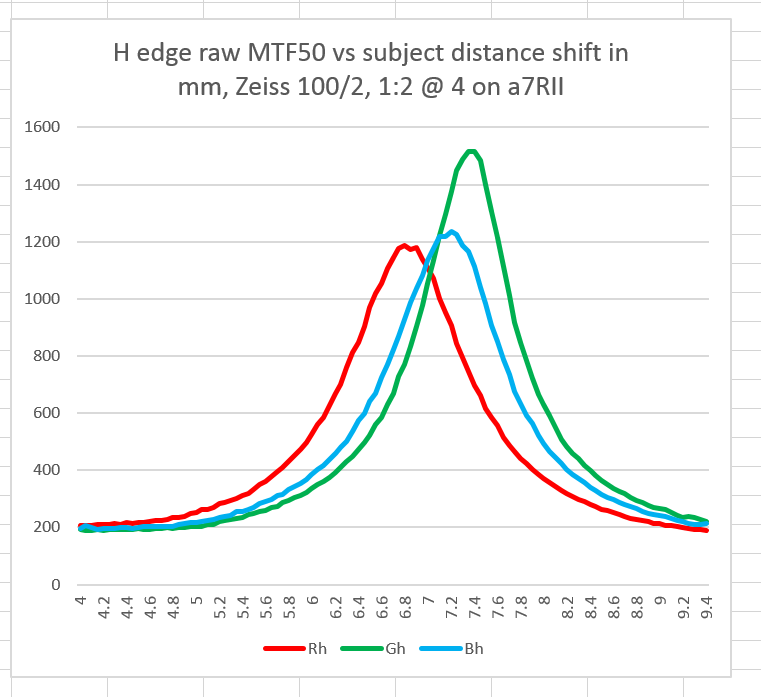
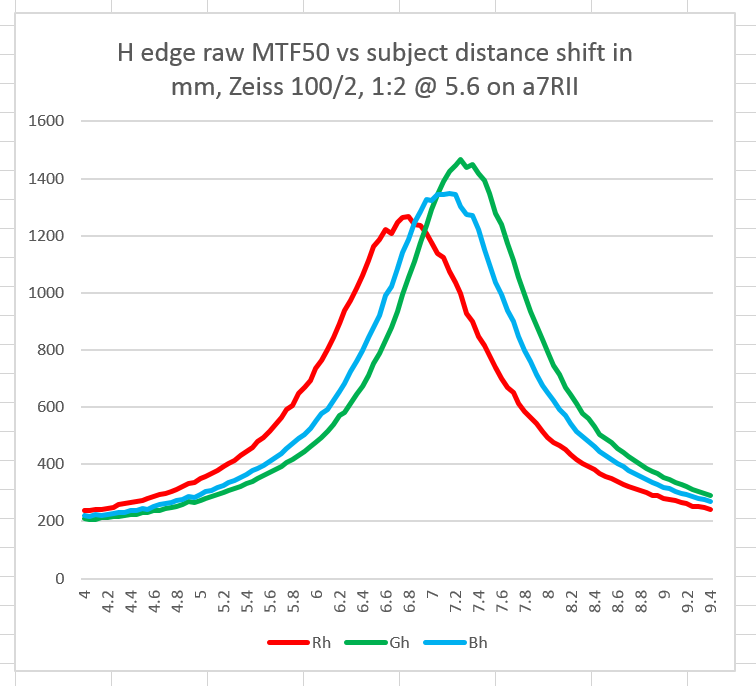
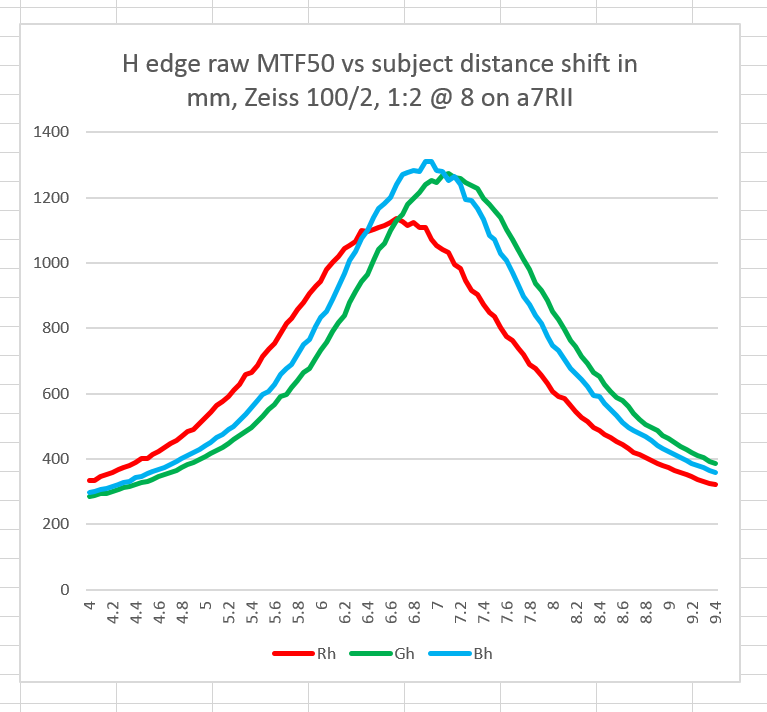
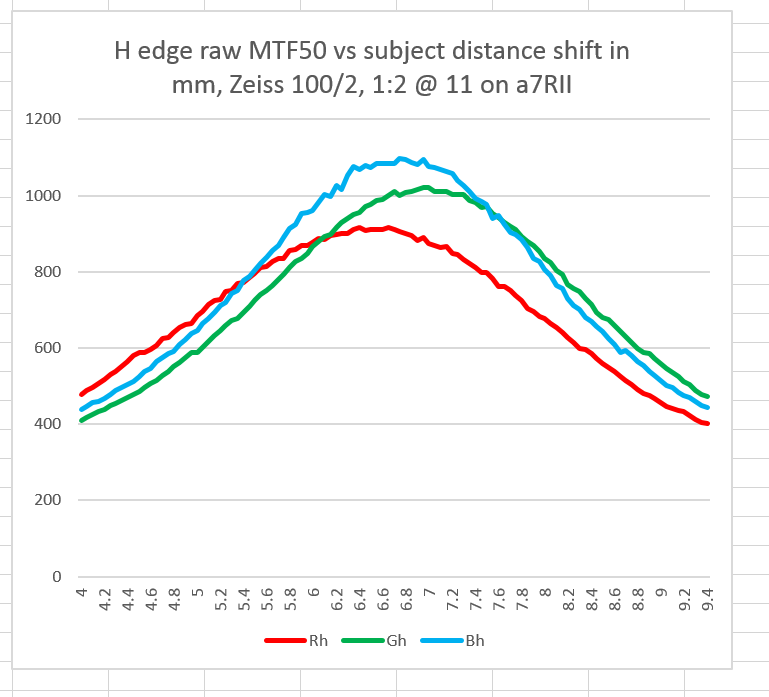
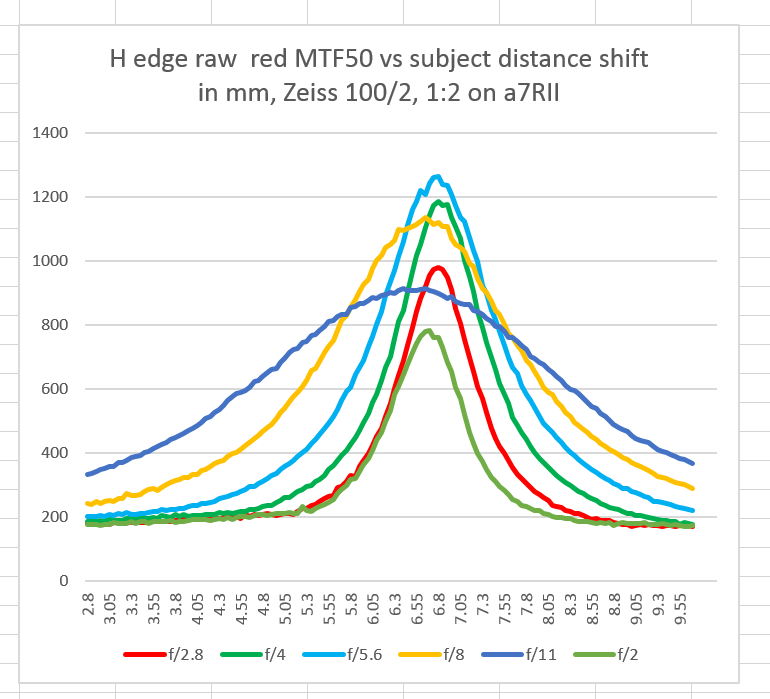
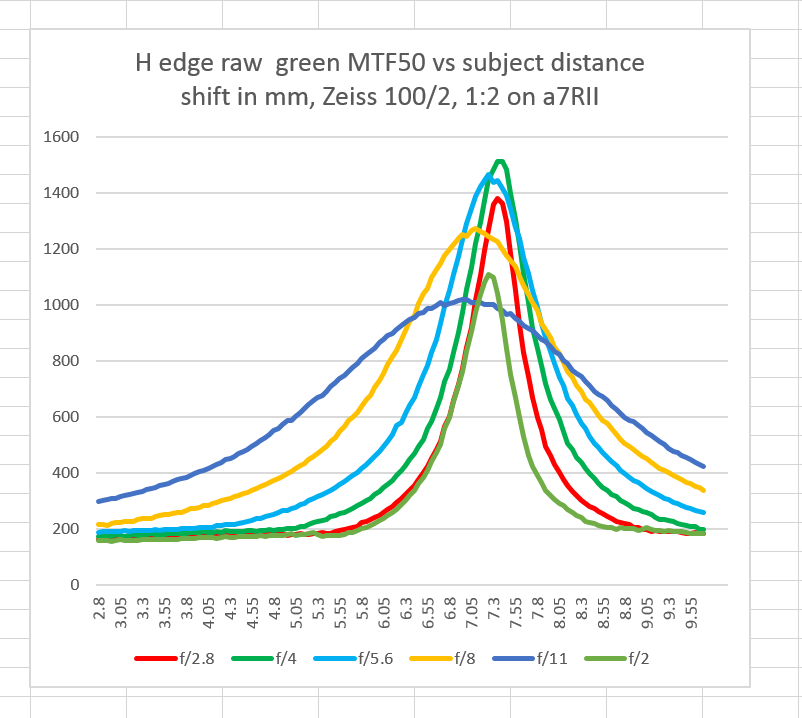
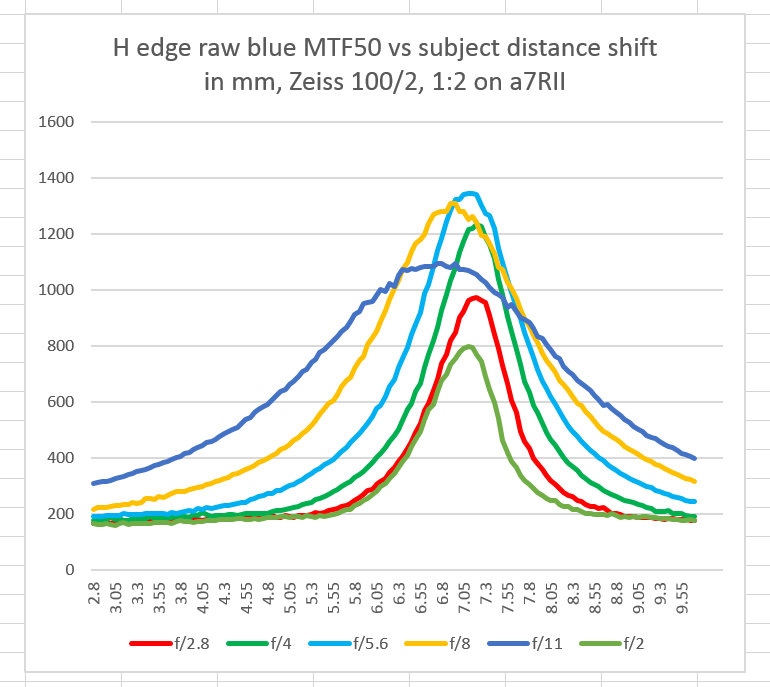
Wow, this is a finely corrected lens.